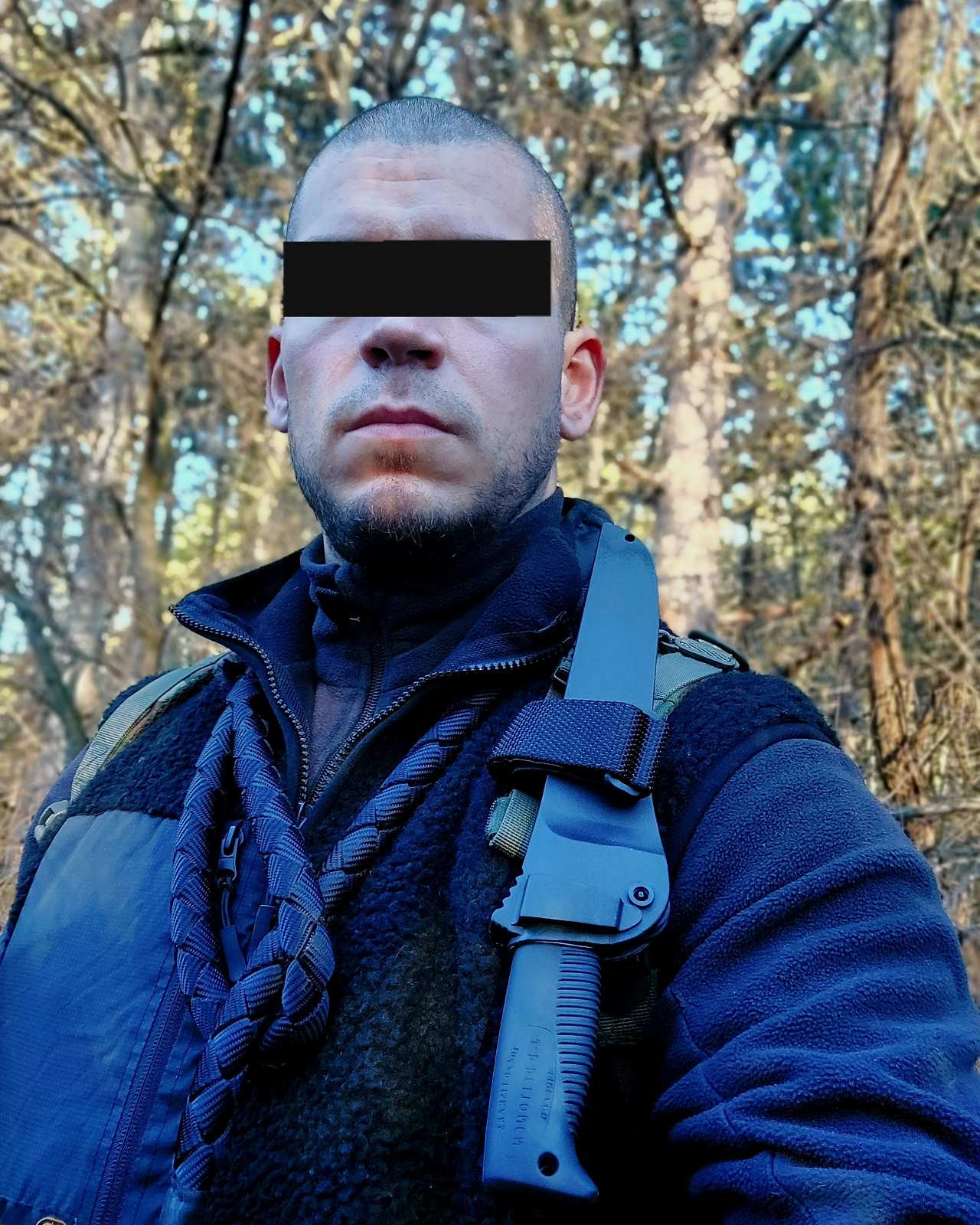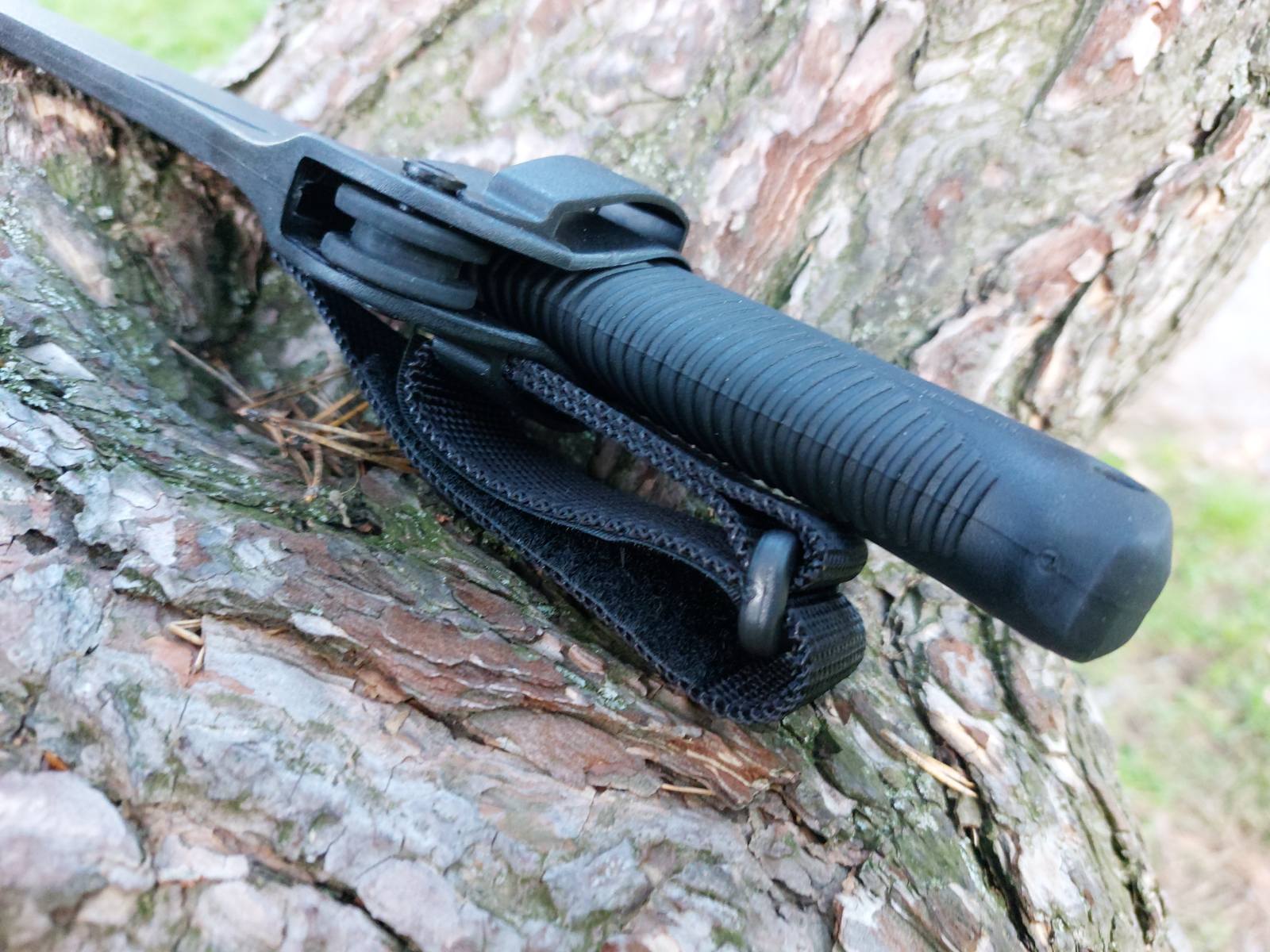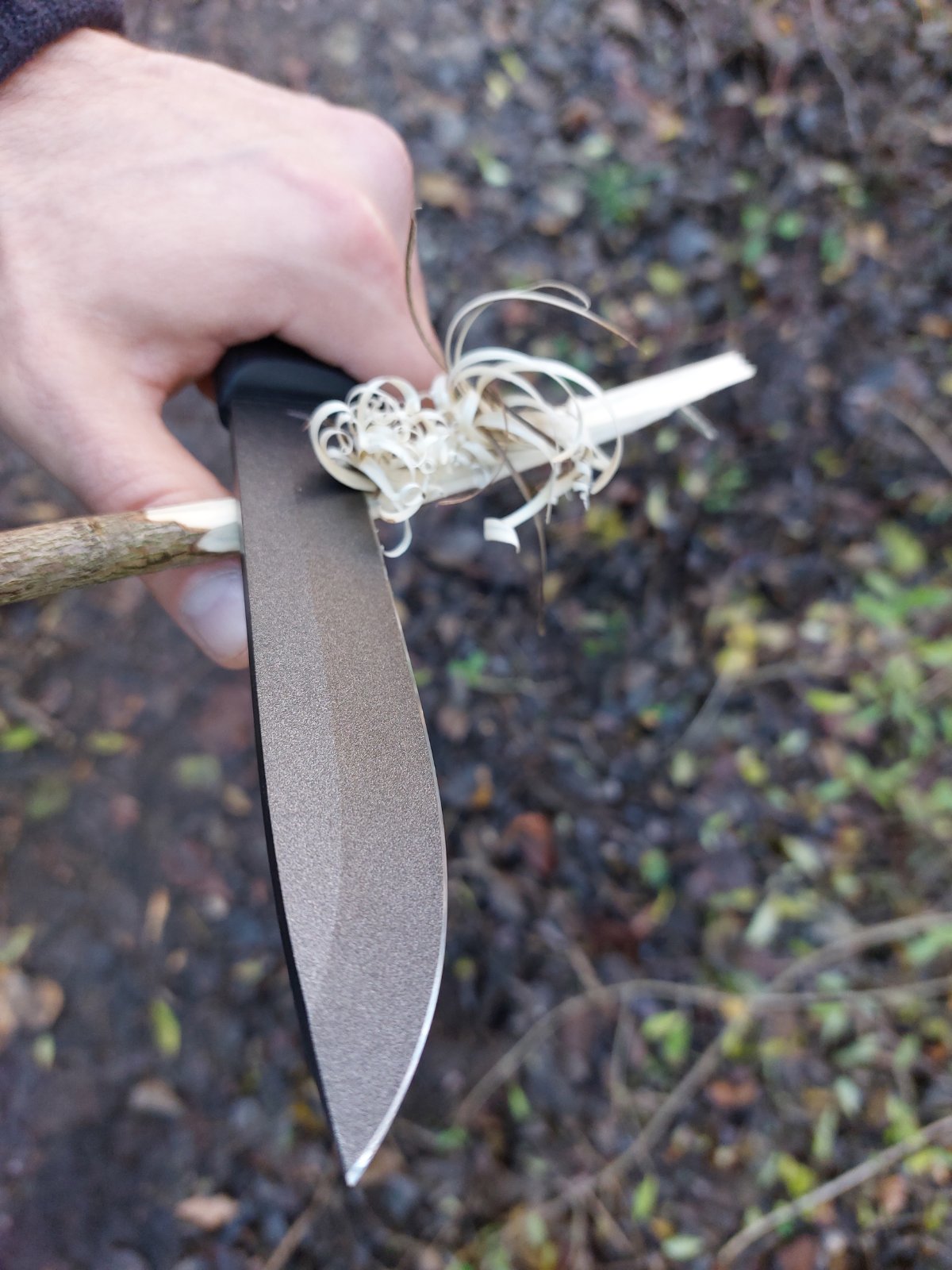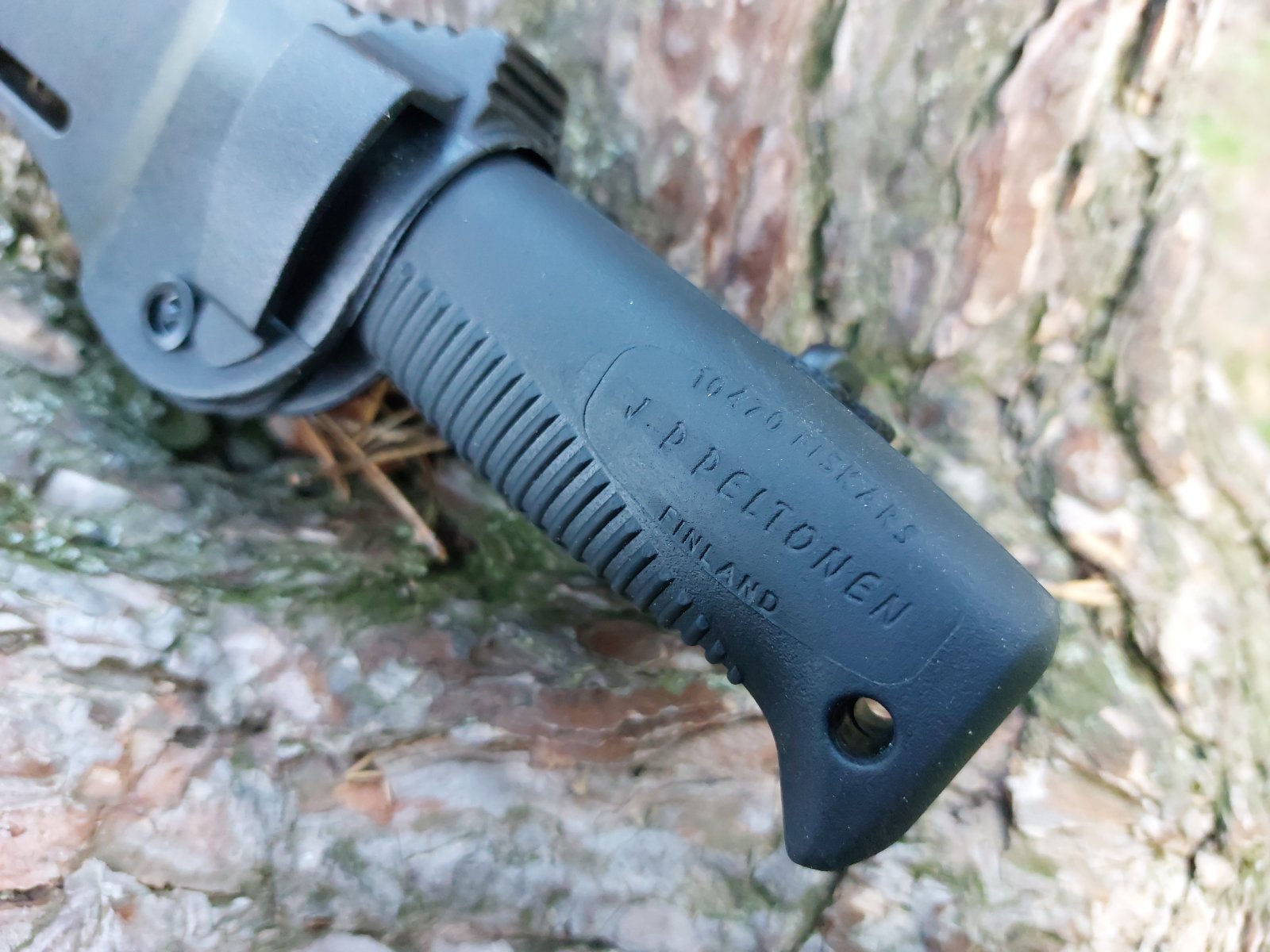SISSIPUUKKO M95
Nowadays it is not a problem to have a problem to choose. The market is incredibly saturated with knives of all types and styles. For example, the segment of survival knives has an incredibly rich offer, which can be confusing. So why not get advice and try it with a knife that was designed by a person moving in dangerous situations and places where a person really depends on his quality equipment? Where does function take precedence over form? Let's imagine a legend in his field: Peltonen Sissipuukko M95!
Sissipuukko M95 was initially a collaboration between two parties: Fiskars Oyj Apb, originally from the village of Fiskars, north of Raseborg, Finland, and which today is a large international company employing more than 4,300 people worldwide. Fiskars has been producing pig iron and wrought iron since 1649, and common products were originally nails, rivets, hoes, iron wheels and knives. Simply put, the company has extensive experience in the production of quality steel for knives and other items related to cutlery. And for that reason, they were chosen to supply knife blade blanks.
However, Fiskars was not the designer or even the manufacturer of these knives. Instead, the Sissipuukko are the invention of Capt. Juha-Pekka Peltonen. And with the current version of the knife, Fiskars is no longer part of the picture, as the blades are now made by Laurin Metalli in Kauhava, Finland, a town known for its knife making centuries ago. The Fiskars brand on the blades today applies only to the village of Fiskars, in which Kpt. Peltonen is alive, or rather a few steps away. (It is a common misunderstanding that the number 10470 on the handle refers to the Fiskars catalog number, but it is actually the postcode of the village).
Although it is no longer in it, Capt. J.P Peltonen served in the Finnish Army and also served as a UN soldier in Cyprus and Sinai and with a UN observer group in Lebanon and Kashmir.
J.P Peltonen in service

In Lebanon, an American officer introduced him to the famous Randall side knife, and he soon ordered one for himself. After arriving home in Finland, Capt. Peltonen decided to design and create his own knife. Later, in 1989, he met the commander of the Finnish Spec Ops, who came to visit him looking for a powerful knife to equip the Finnish Rangers. And it is from this that the Peltonen Sissipuukko (Finnish for "Ranger Knife, or in our country a partisan knife") developed.
However, it was first adopted by the Swedish Special Protection Group, SSG, a special operations unit within the Swedish army. Since then, it has been thoroughly tested and approved by Finnish forces, as well as UN and US forces, as well as special forces from many other countries around the world.
In pursuit of perfection and using the same method used to make the samurai katana (san mai), the old version of this knife used forged blades that were made of differently tempered high carbon steel with the blade and back hardened and tempered to different hardnesses with the blade to HRC 57-58 and the spine to about HRC 45. This gave it a hard facet with good edge life but a soft spine that was flexible and less prone to breaking. With modern steel, such methods are no longer necessary and the current version is cut from 80CrV2 carbon steel, a steel with a higher carbon content as well as some chromium and vanadium. Everything is uniformly hardened to RC 59.5. Additionally, the old versions of this knife prior to 2015 had a completely flat grind, while the current model instead has a high Saber grind with a Teflon or Cerakote finish. While the blades are sharpened by the master blacksmith, who is an old friend and work partner, Capt. Peltonen's has been sewing leather cases by hand for 20 years.
The shape has a lot in common with the Finnish m62 bayonet, with a slight drop in the tip. The blade is Teflon coated to prevent rusting and the back is rounded, which is great for carving and camp work. As with typical Scandinavian knives, there is no ricasso or choil, with the blade starting right at the handle. Again, this makes carving easier because closest to the hand is where you have the most power, and your wrists will thank you later.
The knife has a full-tang construction, with injected thermoplastic that looks and feels like rubber. If the tang was exposed at the back, it could be used for light hammering. Capt. Peltonen mentioned that he had considered it and that it was his original intention, but technical reasons forced him to ignore it. He's still toying with the idea, but worries that it would lead to misuse of the knife, and he may be right about that, considering the stupidity and mistreatment some people ruin their knives with. The thing is, if this knife is good enough for special forces and the military, it is more than suitable for civilians and adventurers around the world.
The case itself deserves a special mention.
It comes in three variants, but the first two distinguish this type of case from others on the market: 3 mm leather (with an inner plastic case) or all-plastic. Both have a special lock called Rotating Rubber Retention, which is basically a small, flexible rubber wheel inside the sheath that locks the knife in place behind the finger guard when properly pushed into the sheath. It's a genius idea that locks it securely even in the inverted position, while also being easy to pull out by pressing your thumb against the case. Of course, the case has holes both for water drainage and for adding a string to attach to the leg or backpack.
Horizontal carry on strap

The belt loop has Velcro and can be attached traditionally by hanging it on a belt, or from the side of the holster to hang the holster upside down on a backpack or combat harness. The plastic holster can be used on both left and right sides as it has a uniform shape on both sides and the belt loop can be attached on both sides as seen in the picture above with a left handed loop. visible on the outside of the case.
The third option is a kydex case in several color variants.
Retention wheel in case

Let's look at some dimensions:
Total length: 280 mm / 11 inches
Blade: 15.5 mm / 6 inches
Blade width: 4.25mm / 0.167 inch
Steel: Teflon-coated 80CrV2 carbon steel, tempered to RC 59.5
Handle: 127 mm 5″ hardened rubber
Sheath: 3mm leather or plastic with twist rubber lock or Kydex sheath
Weight 202g / 7.1oz
Sissipuukko is very comfortable to use regardless of the season, because there is no exposed cold metal in the handle. The grip is quite neutral in grip, so it will support a wide range of grips and remain comfortable for most hand sizes.
The Teflon coating together with the high grinding guarantee excellent cutting properties

Both the blade and the handle are well designed for outdoor work such as preparing firewood and food, while the blade is thick, strong and long enough for battoning - splitting logs. The blade is very sharp and the edge retention is really good, meaning you won't need to sharpen it too often. Okrewm is simply ground like most carbon steels. Scraping wood chips works beautifully, and quite fine carving is a breeze, as is chopping quite thick wood. You can place your thumb on the back of the blade as it has no sharp edges. The high saber grind adds strength to the blade, but the overall geometry also works well for camp kitchen work. It's a nice mix of strength and cutting ability.
The knurled grip provides a good, firm grip even when wet, and using any of the regular grips, pushing on the back of the knife works easily and comfortably. The curved shape of the ends of the handle means that it is easy and safe to stab and pull again.
Comfortable handle for all weather

Basically everything about this knife and its sheath seems to be quite optimal for everyday work in the forest and really hassle-free. It might be interesting to expose the mandrel and add a hammer to the end, but it really isn't necessary. Perhaps some sharp part of the back of the flintlock blade would also be useful, but this part will be uncoated, which exposes the carbon steel to the outside elements and the flintlock can be easily sharpened in other ways.
While bushcrafting knives tend to be a bit more specific in purpose and consequently best at specific tasks, survival knives are deliberately not great at anything, but pretty good at most things. However, this knife broke this dogma with its great versatility and is really excellent in all the tasks it was used for. The price-quality ratio is clearly at a high level, there is no need to break the bank to have a great and functional knife.
If you want a quality knife designed by an experienced professional, here is a possible answer to your needs. The Sissipuukko is a highly versatile tool that can easily carve, slice, split, stab, and overall be a really useful companion. With a fully covered tang, you don't have to worry about low or too high temperatures, and the Teflon-coated blade glides through the material like a dream. For a pleasant price, you will get a faithful companion for life.


























































































































































 Slovakia
Slovakia  Czech Republic
Czech Republic  Austria
Austria  Germany
Germany  Hungary
Hungary  Romania
Romania  Poland
Poland